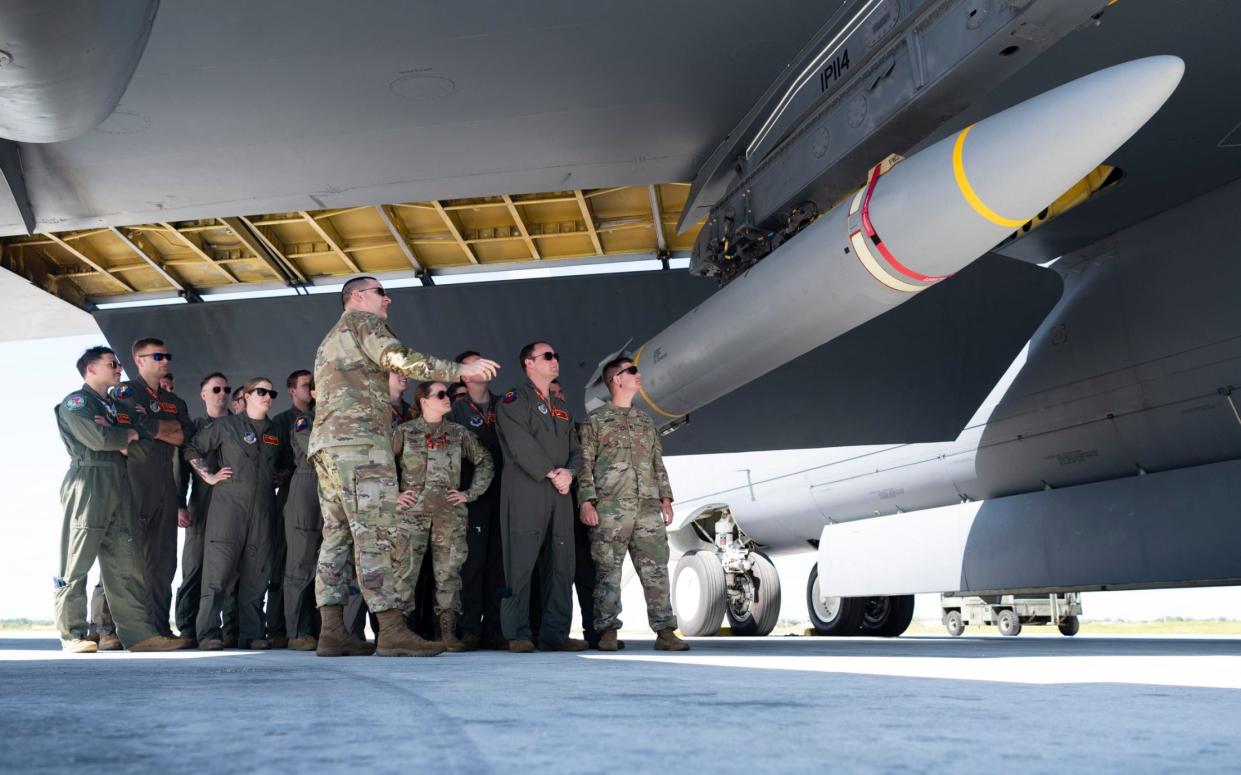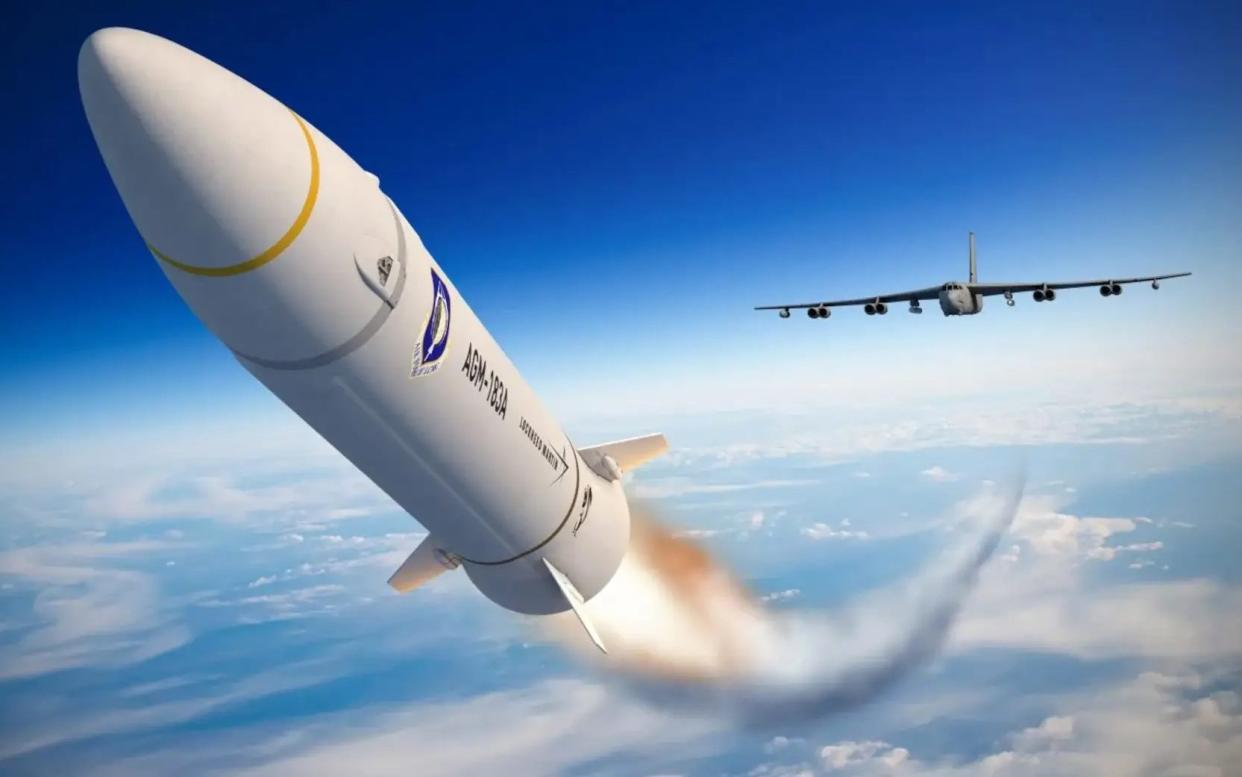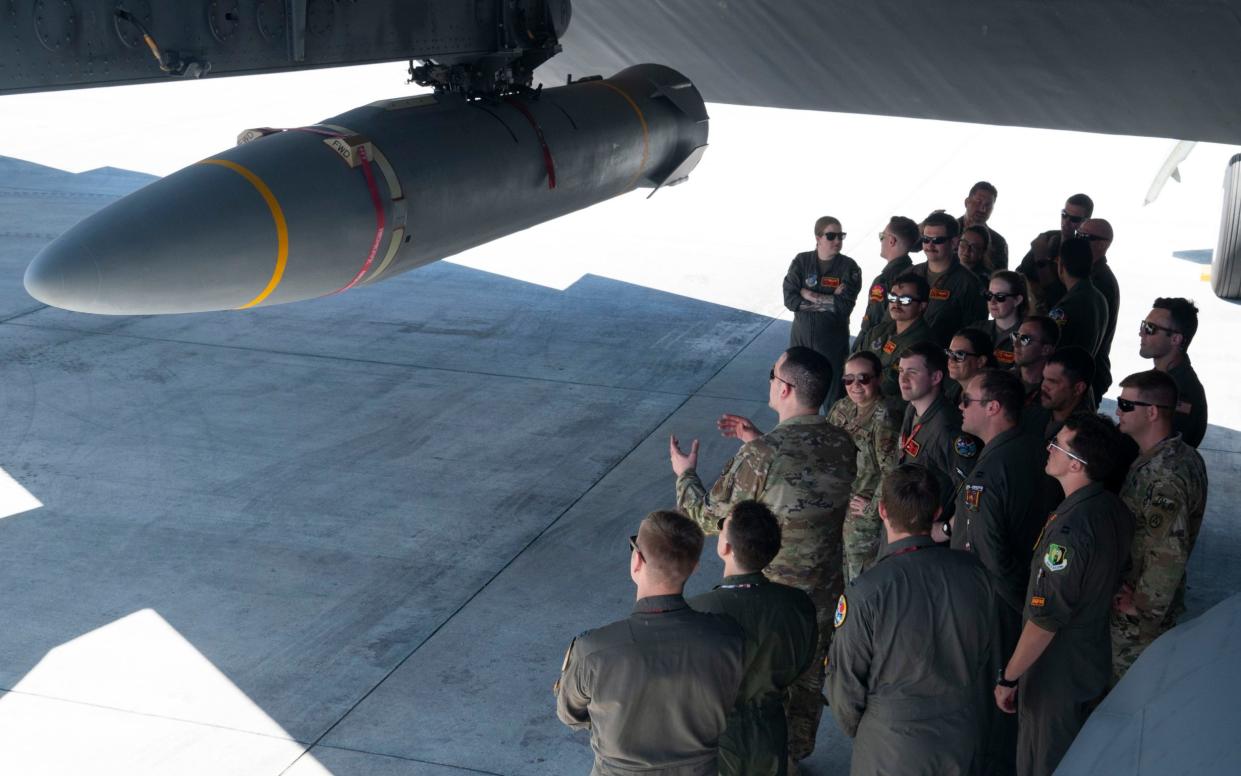Hypersonic missile fired from US bomber

The US Air Force has conducted a full test of its prototype hypersonic missile, after months of delays and similar drills by Russia and China.
A B-52 bomber took off from the territory of Guam on Tuesday and launched the missile, known as the Air-launched Rapid Response Weapon (ARRW), on a missile testing site in the Marshall Islands.
The US Air Force (USAF) declined to comment on the details of the mission, but the test is thought to be the final drill in a years-long programme to develop the technology.
Hypersonic missiles have the capacity to travel at more than five times the speed of sound, and approach targets from a much lower angle, making them harder to detect by enemy warning systems.

The slow development of the US’s weapons have been criticised by Congress, amid warnings that Russia, China and North Korea are developing similar programmes.
“This test launched a full prototype operational hypersonic missile and focused on the ARRW’s end-to-end performance,” said a USAF spokesman.
“The Air Force gained valuable insights into the capabilities of this new, cutting-edge technology.
The spokesman said the test “acquired valuable, unique data and was intended to further a range of hypersonic programs” and “validated and improved our test and evaluation capabilities”.
The test came as North Korea claimed to have tested its own hypersonic weapon.

The Korean Central News Agency on Wednesday said the country had successfully tested a “multi-stage solid-fuel engine,” a key component of a hypersonic weapon.
The news outlet said that “a timetable for completing the development of the new-type intermediate-range hypersonic missile weapon system was set”.
When complete, the North Korean missile could have the range to hit Guam, a US territory that is home to three military bases.
The Pentagon spent $4.7 billion (£3.68 billion) on hypersonic missile development last year, but has been criticised by Congress for the slow progress of the programme and plans to build hypersonic defences.
The US government expects the defences will be available from the early 2030s, but lawmakers have demanded it be brought online by 2029 because of threats from Russia and China.
The UK does not currently have a hypersonic missile system, but has announced a plan to develop “future hypersonic concepts and technologies … as soon as reasonably possible”.


